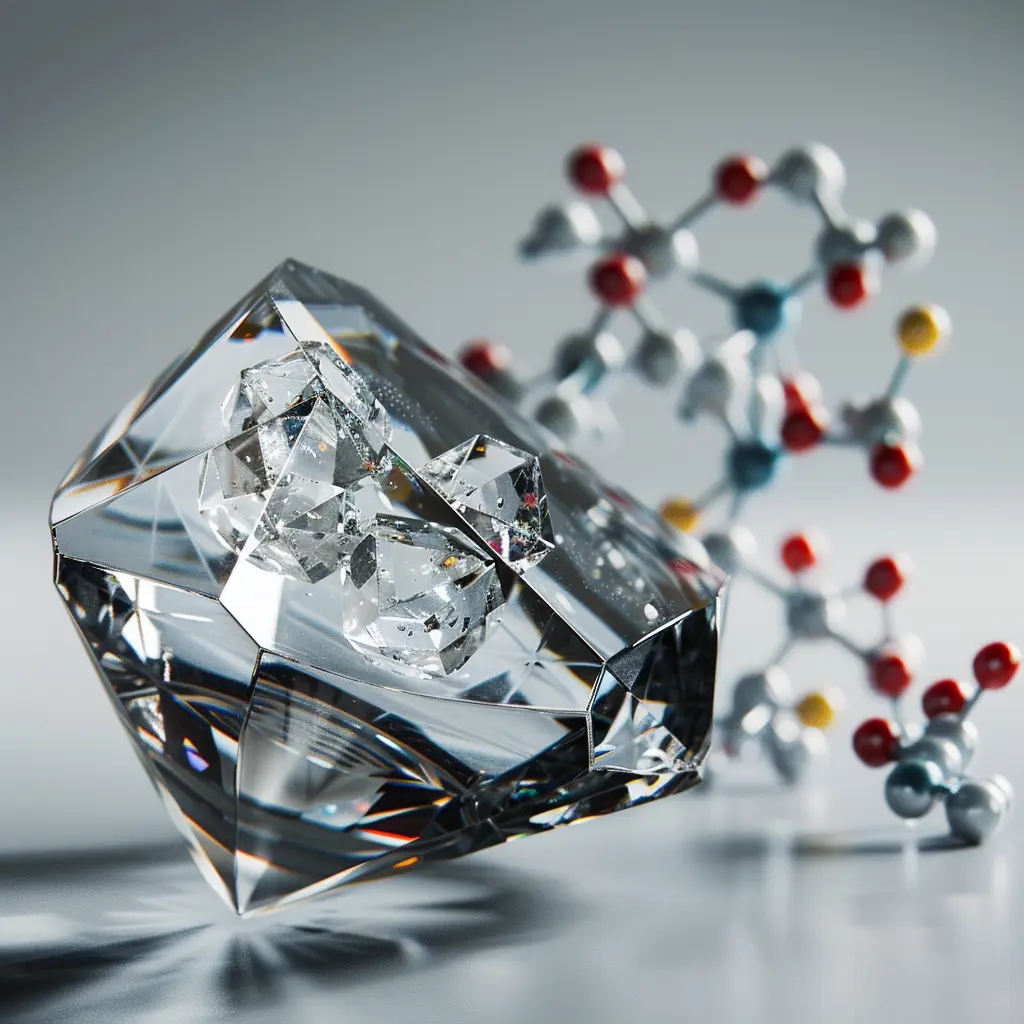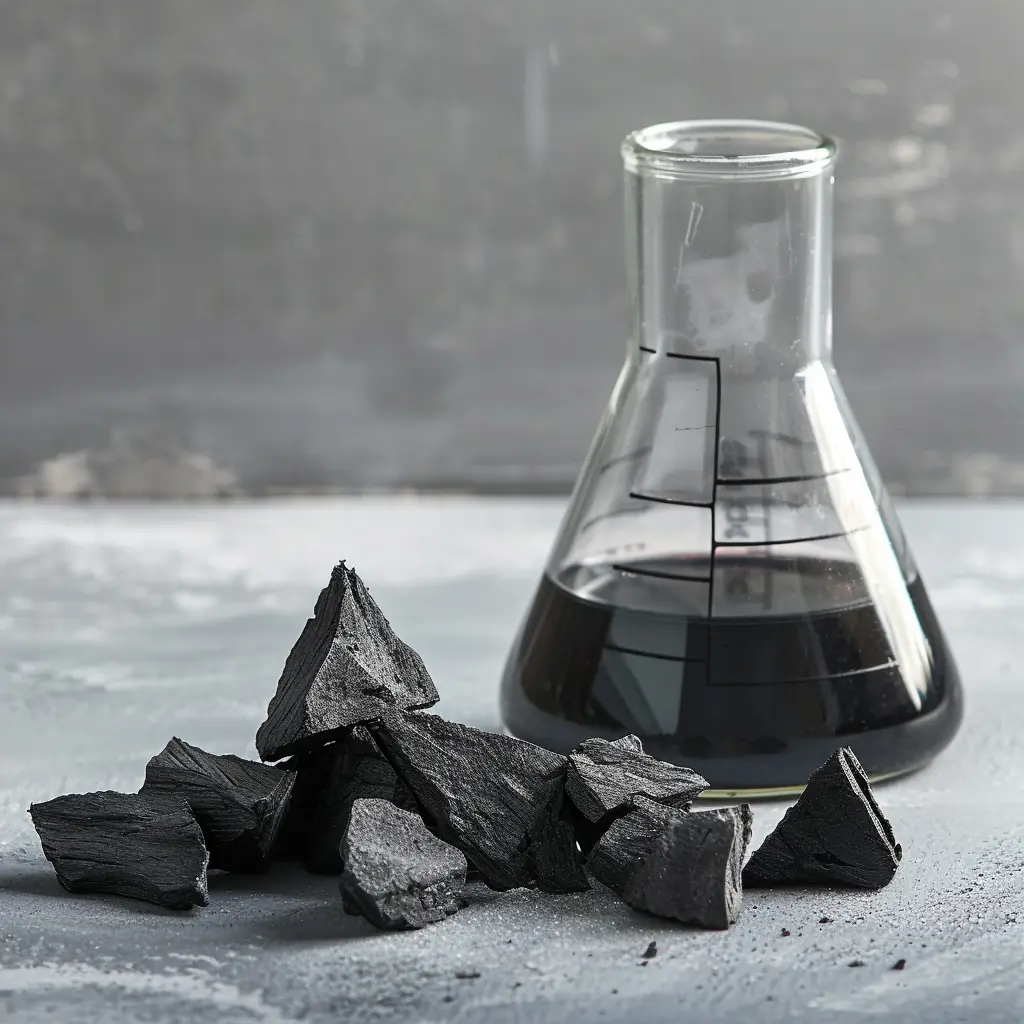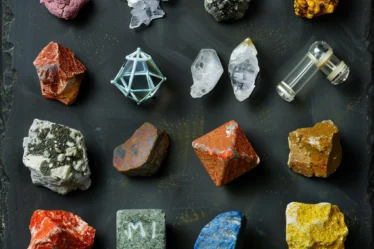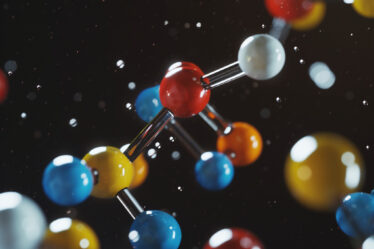
Carbon forms the basis of millions of compounds, from the graphite in your pencil to the sugar in your food. Its ability to bond in countless ways makes it unmatched in chemistry.
In this study guide, we’ll explore carbon’s atomic structure, carbon allotropes like diamond and graphite, and how it forms bonds in organic and inorganic compounds. You’ll learn about molecular formulas, reactivity, and the role of carbon in chemical reactions. Let’s break down the unique chemistry of carbon step by step.
Carbon Compounds: Quick Summary
Do you just need the basics? Here’s a simple explanation of carbon, allotropes, and carbon compounds:
🟠 Carbon, atomic number 6, forms four covalent bonds due to its tetravalency.
🟠 Allotropes of carbon include diamond, graphite, fullerenes, and graphene, each with distinct structures and properties.
🟠 Carbon isotopes, such as $^{12}C$, $^{13}C$, and $^{14}C$, differ in stability and natural abundance.
🟠 Carbon compounds include simple molecules like $CO_2$, $CH_4$, and inorganic forms like carbonates and carbides.
🟠 Carbon chemical reactions are combustion and bonding with metals to form carbides.
Struggling with different carbon compounds? Don’t worry. A tutor can explain it in a way that clicks for you. You can also find more useful topics in our Chemistry blogs.
What Is Carbon in Chemistry
Carbon symbolized as $C$, is an element in Group 14 of the periodic table. Its atomic number is 6, meaning each carbon atom has six protons and usually six neutrons. Carbon’s four valence electrons allow it to form up to four covalent bonds, making it versatile in creating various compounds. This ability to bond with itself and other elements is the foundation of organic and inorganic chemistry. Carbon exists in several natural forms, including graphite, diamond, and amorphous carbon, each with unique physical and chemical properties.
Properties of Carbon as an Element
Carbon, a nonmetal, has diverse physical and chemical properties.
Carbon Physical Properties
Carbon exists as a solid at room temperature with various allotropes. Graphite is soft, conductive, and slippery, while diamond is exceptionally hard and thermally conductive. Amorphous carbon, like coal and soot, lacks a defined structure.
Carbon Chemical Properties
Carbon’s four valence electrons enable strong covalent bonds. It reacts with oxygen to form $CO$ or $CO_2$, with halogens to create compounds like $CCl_4$, and with metals to form carbides, such as $CaC_2$.
Carbon Allotropes – Structure and Properties
Carbon’s allotropes demonstrate its remarkable ability to form diverse structures. Each allotrope has unique properties determined by its bonding and arrangement of carbon atoms. This adaptability explains why we use carbon from cutting tools to nanotechnology.
Major Allotropes of Carbon
- Diamond: Each carbon atom forms four covalent bonds in a tetrahedral structure, creating an extremely hard material for cutting tools and jewelry.
- Graphite: Carbon atoms form layers of hexagonal rings held together by weak forces, making it a good lubricant and a conductor of electricity.
- Fullerenes: Hollow molecules shaped like spheres ($C_{60}$) or tubes, used in drug delivery and materials science.
- Graphene: A single layer of carbon atoms in a hexagonal lattice, known for its strength and excellent electrical conductivity, used in electronics and energy storage.
Structural Comparison of Allotropes
| Allotrope | Bonding | Conductivity | Uses |
| Diamond | 3D tetrahedral covalent bonds | Insulator | Cutting tools, jewelry |
| Graphite | Layers with weak interlayer forces | Conductor | Lubricants, electrodes, pencils |
| Fullerenes | Spherical or tubular covalent bonds | Semiconductor | Drug delivery, materials science |
| Graphene | 2D hexagonal lattice | Excellent conductor | Electronics, nanotechnology, energy storage |
The distinct bonding in each allotrope explains its physical and chemical properties.
Carbon Bonding – Covalent and Beyond
Carbon’s ability to bond with up to four other atoms makes it one of the most versatile elements in chemistry. This versatility comes from its tetravalency, allowing it to form stable chains, rings, and complex networks.
These bonds are primarily covalent, offering stability and flexibility in molecular structures. Carbon’s bonding extends to single, double, and triple bonds, each with unique chemical properties.
Types of Bonds Formed by Carbon
- Single Bonds: Carbon shares one pair of electrons with another atom, forming strong, flexible bonds. Example: Methane ($CH_4$), where carbon connects to four hydrogen atoms.
- Double Bonds: Two pairs of electrons are shared, resulting in a stronger, shorter bond. Example: Ethene ($C_2H_4$), where two carbon atoms share a double bond in a planar structure.
- Triple Bonds: Carbon shares three pairs of electrons, creating a linear structure. Example: Ethyne ($C_2H_2$), commonly used in welding.
These bond types allow carbon to form molecules ranging from simple hydrocarbons to complex biomolecules.
Hybridization in Carbon Compounds
The shape and bonding of carbon atoms depend on hybridization:
- $sp^3$ Hybridization: Four single bonds arranged tetrahedrally, as in methane ($CH_4$).
- $sp^2$ Hybridization: One double bond and two single bonds in a trigonal planar shape, as in ethene ($C_2H_4$).
- $sp$ Hybridization: One triple or two double bonds in a linear arrangement, as in ethyne ($C_2H_2$).
Hybridization explains carbon’s ability to form diverse molecular geometries, supporting its role in countless chemical reactions and structures.
Carbon Compounds – The Basics
Carbon compounds form the basis of chemistry, with their diversity stemming from carbon’s unique ability to form stable bonds with itself and other elements. These compounds fall into two main categories: organic and inorganic.
Organic compounds are characterized by carbon-hydrogen bonds and form the basis of life. In contrast, inorganic compounds like carbonates and carbides include compounds where carbon interacts with metals or nonmetals.
Examples of Simple Carbon Compounds
Simple carbon compounds are foundational in chemistry. Let’s look at a few key examples:
- Carbon Dioxide ($CO_2$): A linear molecule produced by respiration and combustion, essential for photosynthesis.
- Methane ($CH_4$): The simplest hydrocarbon and a significant energy source.
- Carbon Monoxide ($CO$): A toxic, reactive gas formed during incomplete combustion.
These examples highlight how carbon compounds function in everyday chemical reactions.
Inorganic Carbon Compounds
Inorganic carbon compounds demonstrate carbon’s versatility beyond organic chemistry. Common classes include:
-
Carbonates:
- Found in minerals like calcium carbonate ($CaCO_3$), which forms limestone, marble, and chalk.
- Carbonates are major in geological processes and materials science.
-
Cyanides:
- Compounds like sodium cyanide ($NaCN$) are widely used in gold extraction.
- Cyanides are highly reactive and require careful handling.
-
Carbides:
- Examples include silicon carbide ($SiC$), a material known for its hardness and industrial applications.
- Carbides often serve as abrasives or are used in cutting tools.
-
Oxocarbons:
- Compounds containing carbon and oxygen only, such as carbon suboxide ($C_3O_2$), are less common but showcase carbon’s ability to form varied structures.
Organic Compounds
Organic chemistry revolves around carbon compounds that form the backbone of life. Key classes of organic compounds include:
- Hydrocarbons:
- Alkanes (e.g., methane, ethane): Saturated hydrocarbons used as fuels.
- Alkenes (e.g., ethene, propene): Unsaturated hydrocarbons involved in polymer production.
- Alkynes (e.g., ethyne): Compounds with triple bonds used in welding.
- Alcohols (e.g., ethanol): Compounds with $-OH$ groups used in solvents and fuels.
- Ketones (e.g., acetone): Contain a carbonyl group widely used in industry.
- Carboxylic Acids (e.g., acetic acid): Organic acids essential in biochemistry.
- Carbohydrates: Sugars like glucose ($C_6H_{12}O_6$) provide energy for living organisms.
- Proteins: Made of amino acids, they perform structural and functional roles in cells.
- Lipids: Fats and oils used for energy storage.
- Plastics: Examples include polyethylene and polystyrene, which are made from hydrocarbon monomers.
Carbon’s Physical and Chemical Properties
Carbon has unique properties that make it versatile in chemistry. It exists as a solid at room temperature and varies in appearance based on its form.
Graphite is black, soft, and conducts electricity, while diamond is clear, extremely hard, and does not conduct electricity.
The melting and boiling points of carbon depend on its allotrope. For example, diamonds can withstand temperatures up to 3,550°C without melting.
Chemically, carbon reacts with oxygen to produce energy. In a high-oxygen environment, it forms carbon dioxide ($CO_2$), while limited oxygen produces carbon monoxide ($CO$).
Carbon also reacts with metals like calcium to create carbides, such as calcium carbide ($CaC_2$), which we use to produce acetylene gas.
Example Reactions of Carbon
You encounter carbon’s chemical reactions daily. Here are two important examples:
Combustion:
Complete: $C + O_2 \rightarrow CO_2$
Incomplete: $2C + O_2 \rightarrow 2CO$
Carbide Formation:
$Ca + 2C \rightarrow CaC_2$
Combustion powers engines and provides heat, while carbide formation supports various industrial uses.
Polarity and Reactivity
Carbon’s ability to bond differently affects how it behaves in reactions. Nonpolar molecules, like methane ($CH_4$), don’t mix with water and are stable under most conditions. Polar compounds, like carbon dioxide ($CO_2$), dissolve in water and participate in chemical processes.
Carbon’s hybridization also determines reactivity. Molecules with $sp$ bonds, such as acetylene, are reactive and used in fuel, while $sp^3$ bonds in methane provide stability for daily use. You see these properties at work in everything from fuels to biological molecules.
Carbon Isotopes – $^{12}C$, $^{13}C$, and $^{14}C$
Carbon has three naturally occurring isotopes: $^{12}C$, $^{13}C$, and $^{14}C$.
Isotopes are atoms of the same element with the same number of protons but different numbers of neutrons. $^{12}C$ is the most abundant, making up about 98.9% of all carbon atoms. It is stable and forms the backbone of most organic molecules.
$^{13}C$, also stable, is less common (about 1.1%) and is used in scientific studies like tracing metabolic pathways or measuring environmental changes through isotope ratios. $^{14}C$, in contrast, is radioactive, with a half-life of approximately 5,730 years. It decays to nitrogen-14, emitting beta particles. This property makes $^{14}C$ useful in radiocarbon dating, helping scientists determine the age of ancient organic materials.
Advance Your Knowledge in Carbon
Are carbon compounds tricky for you? A qualified chemistry instructor can explain complex topics in a way that makes sense to you, making organic and inorganic chemistry understandable and enjoyable.
Search for a tutor using phrases like “chemistry tutor Edinburgh” or “chemistry teacher Liverpool” on platforms like meet’n’learn. You’ll find someone who can tailor lessons to your needs.
If you prefer learning in a group, search for “chemistry classes Leeds” or “chemistry lessons London” online. The search will lead you to chemistry tutoring nearby.
Carbon: Frequently Asked Questions
1. What is carbon in chemistry?
Carbon is a nonmetal element with atomic number 6 and can form four covalent bonds.
2. What are carbon’s allotropes?
Carbon allotropes include diamond, graphite, graphene, and fullerenes, each with unique structures and properties.
3. Why is carbon tetravalent?
Carbon’s tetravalency arises because it has four electrons in its outer shell, allowing it to form stable covalent bonds.
4. What is the molecular formula of carbon dioxide?
The molecular formula of carbon dioxide is $CO_2$, indicating one carbon atom bonded to two oxygen atoms.
5. What are carbon isotopes?
Carbon isotopes like $^{12}C$, $^{13}C$, and $^{14}C$ differ by the number of neutrons in their nuclei.
6. How do carbon compounds form?
Carbon compounds form when carbon atoms bond with other elements through single, double, or triple covalent bonds.
7. What is the structure of graphene?
Graphene is a single layer of carbon atoms arranged in a hexagonal lattice.
8. How does carbon react with oxygen?
Carbon reacts with oxygen in two ways: complete combustion forms $CO_2$, while incomplete combustion forms $CO$.
Sources:
1. Royal Society of Chemistry
2. Britannica
3. PubChem



